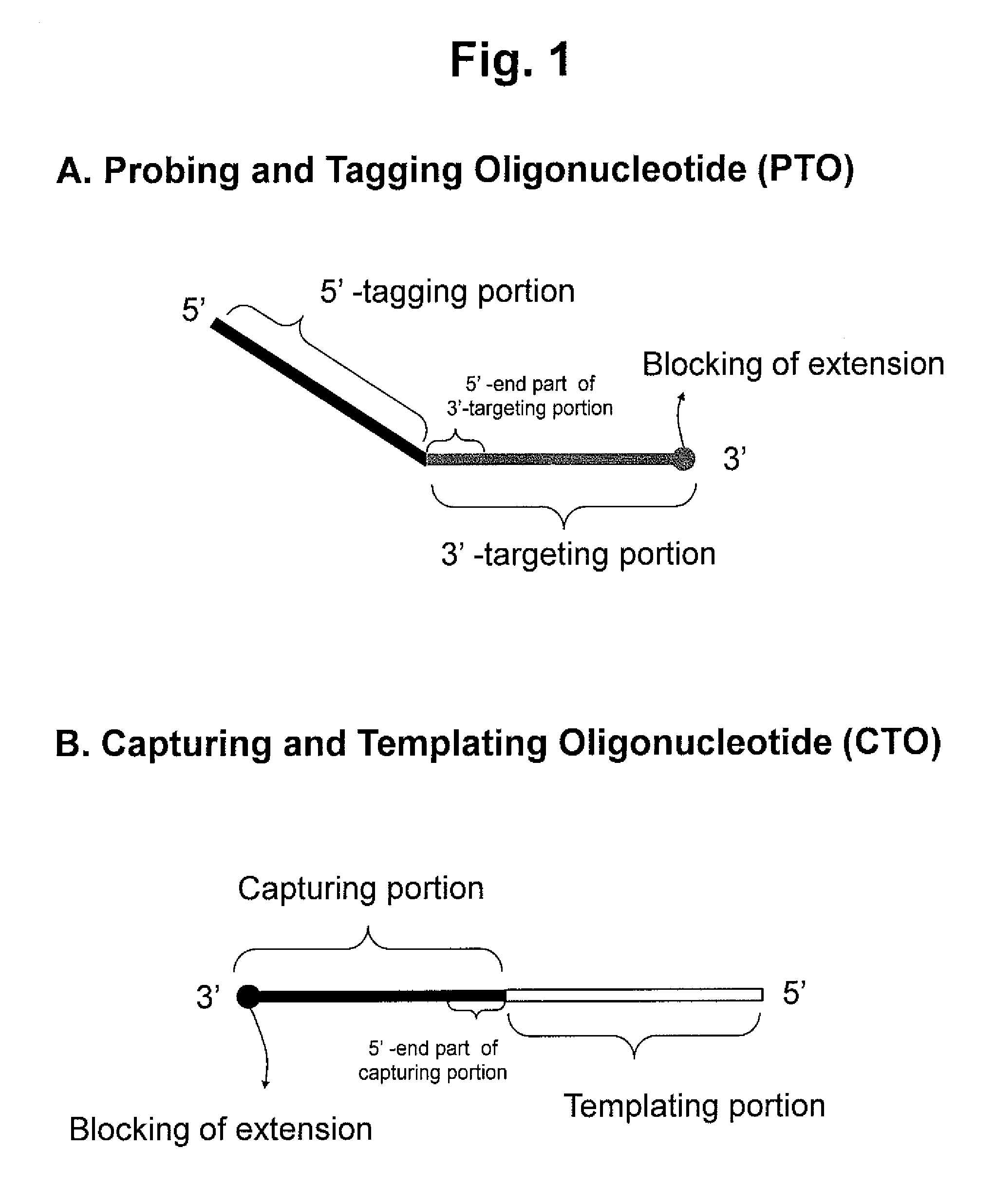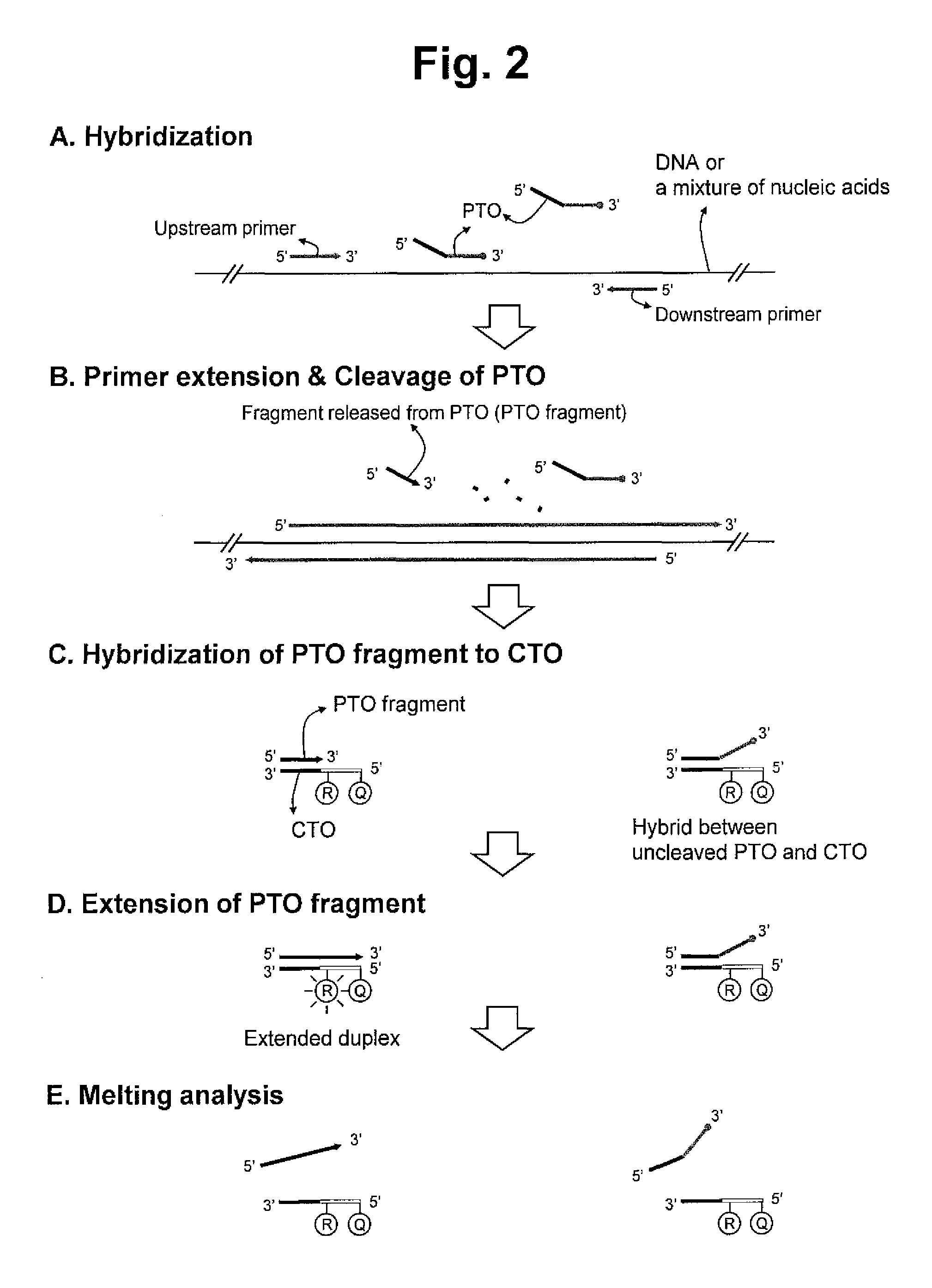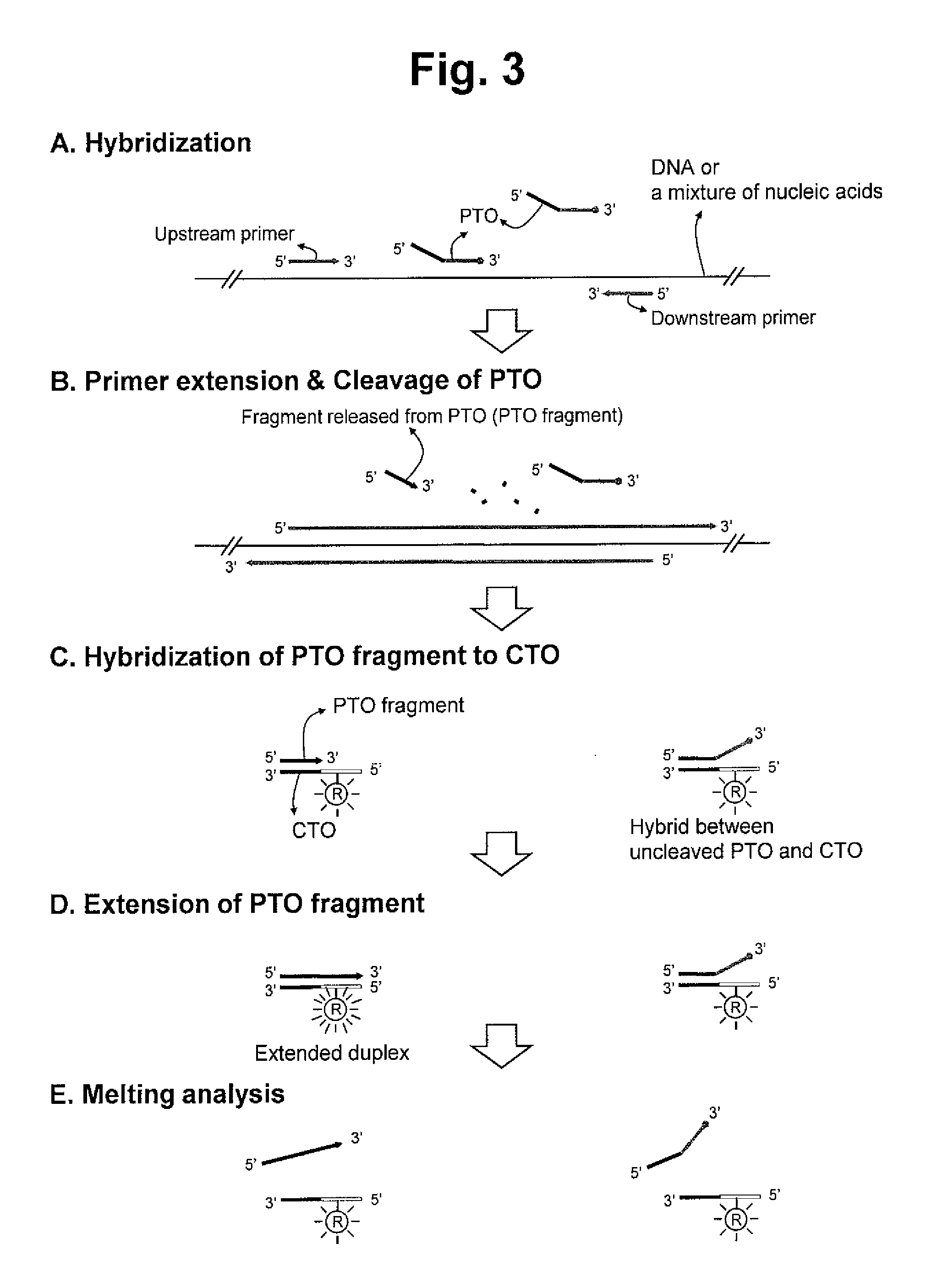Detection of target nucleic acid sequences by PTO cleavage and extension assay
a target nucleic acid and assay technology, applied in the field of detection of target nucleic acid sequences by pto cleavage and extension assay, can solve the problems of limiting the number of target sequences to be detected, problems to be solved for improving reliability, and the use of hybridization methods and processes is very likely to produce false positives. , to achieve the effect of improving accuracy and convenience, improving accuracy and convenien
- Summary
- Abstract
- Description
- Claims
- Application Information
AI Technical Summary
Benefits of technology
Problems solved by technology
Method used
Image
Examples
first embodiment
Intrastrand Interactive-Dual Label
[0149]In a first embodiment of an interactive dual label system, the fragment or the CTO has an interactive dual label comprising a reporter molecule and a quencher molecule; wherein the melting of the extended duplex in the step (e) induces change of a signal from the interactive dual label to give the target signal in the step (e). The first embodiment of the interactive dual label system is illustrated in FIGS. 2, 6 and 9. The first embodiment is named as an intrastrand interactive-dual label.
First Embodiment in FIG. 2
Intrastrand Interactive-Dual Label
[0150]The exemplified embodiment is described with referring to FIG. 2. The templating portion of the CTO has a reporter molecule and a quencher molecule. The PTO hybridized with the target nucleic acid sequence is digested to release the fragment and the fragment is hybridized with the capturing portion of the CTO and extended to form the extended duplex.
[0151]When the extended duplex is formed in ...
second embodiment
Interstrand Interactive-Dual Label
[0170]In the second embodiment of the interactive label system, the fragment has one of an interactive dual label comprising a reporter molecule and a quencher molecule and the CTO has the other of the interactive dual label; wherein the melting of the extended duplex in the step (e) induces change of a signal from the interactive dual label to give the target signal in the step (e).
[0171]The exemplified embodiment is described with referring to FIG. 8.
[0172]When the extended duplex is formed in the step (d), the signal from the reporter molecule linked to the CTO is quenched by the quencher molecule linked to the PTO. When the extended duplex is melted in the step (e), the reporter molecule and the quencher molecule are separated to allow the quencher molecule to unquench the signal from the reporter molecule, such that the target signal is given to indicate the presence of the extended duplex in the step (e).
[0173]Preferably, the target signal giv...
example 1
Evaluation of Probing and Tagging Oligonucleotide Cleavage & Extension (PTOCE) Assay
[0391]A New assay, Probing and Tagging Oligonucleotide Cleavage & Extension (PTOCE) assay, was evaluated whether an extended duplex can provide a target signal for the detection of a target nucleic acid sequence.
[0392]For this evaluation, PTOCE assay detecting the presence of an extended duplex by melting analysis was performed (PTOCE assay comprising melting analysis). We used Taq DNA polymerase having a 5′ nuclease activity for the extension of upstream primer, the cleavage of PTO and the extension of PTO fragment.
[0393]The extended duplex formed during the assay was designed to have an interactive dual label. The interactive dual label in the extended duplex was provided by (i) CTO labeled with a reporter molecule and a quencher molecule (dual-labeled CTO) or (ii) PTO having a quencher molecule and CTO having a reporter molecule (a quencher-labeled PTO and a reporter-labeled CTO). PTO and CTO are ...
PUM
| Property | Measurement | Unit |
|---|---|---|
| temperature | aaaaa | aaaaa |
| Tm | aaaaa | aaaaa |
| temperature | aaaaa | aaaaa |
Abstract
Description
Claims
Application Information
 Login to View More
Login to View More - R&D
- Intellectual Property
- Life Sciences
- Materials
- Tech Scout
- Unparalleled Data Quality
- Higher Quality Content
- 60% Fewer Hallucinations
Browse by: Latest US Patents, China's latest patents, Technical Efficacy Thesaurus, Application Domain, Technology Topic, Popular Technical Reports.
© 2025 PatSnap. All rights reserved.Legal|Privacy policy|Modern Slavery Act Transparency Statement|Sitemap|About US| Contact US: help@patsnap.com



